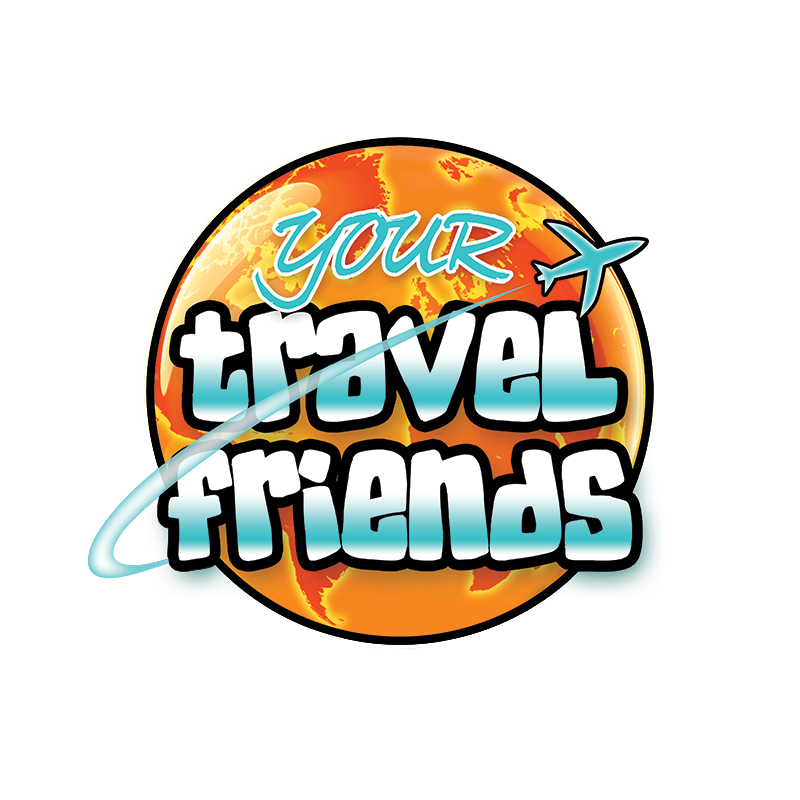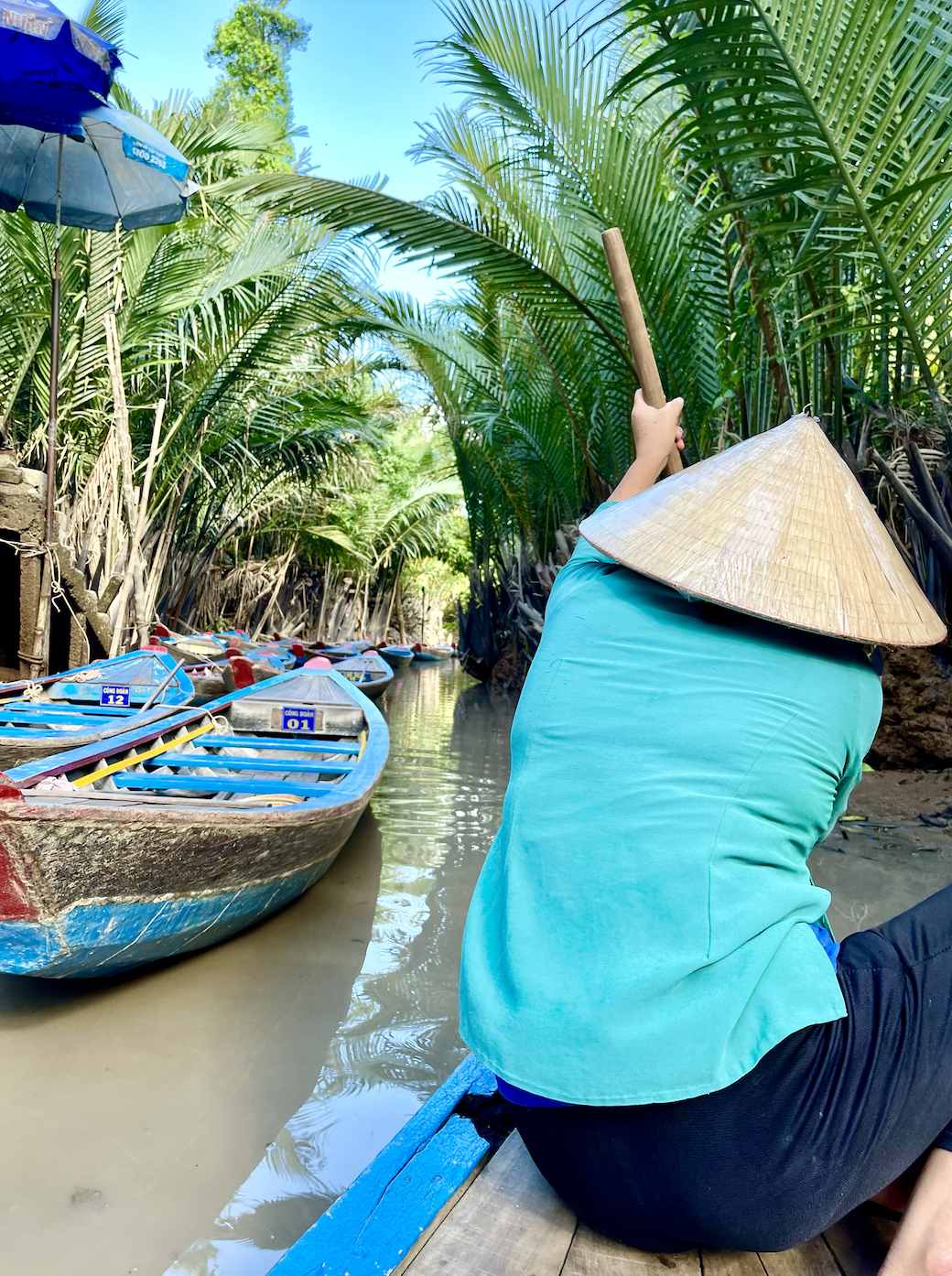
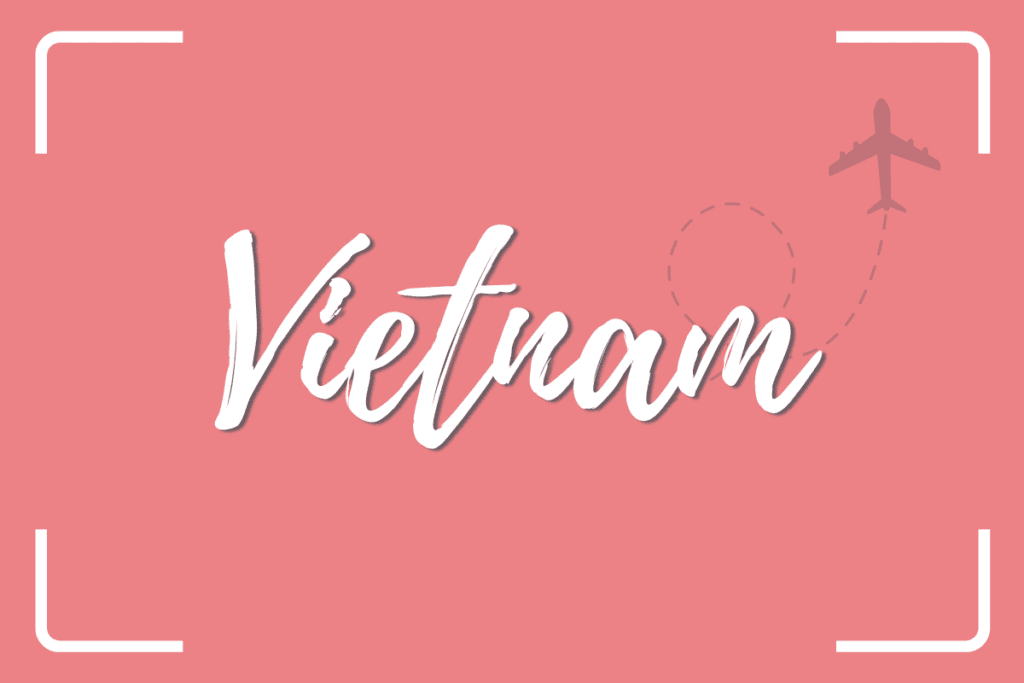
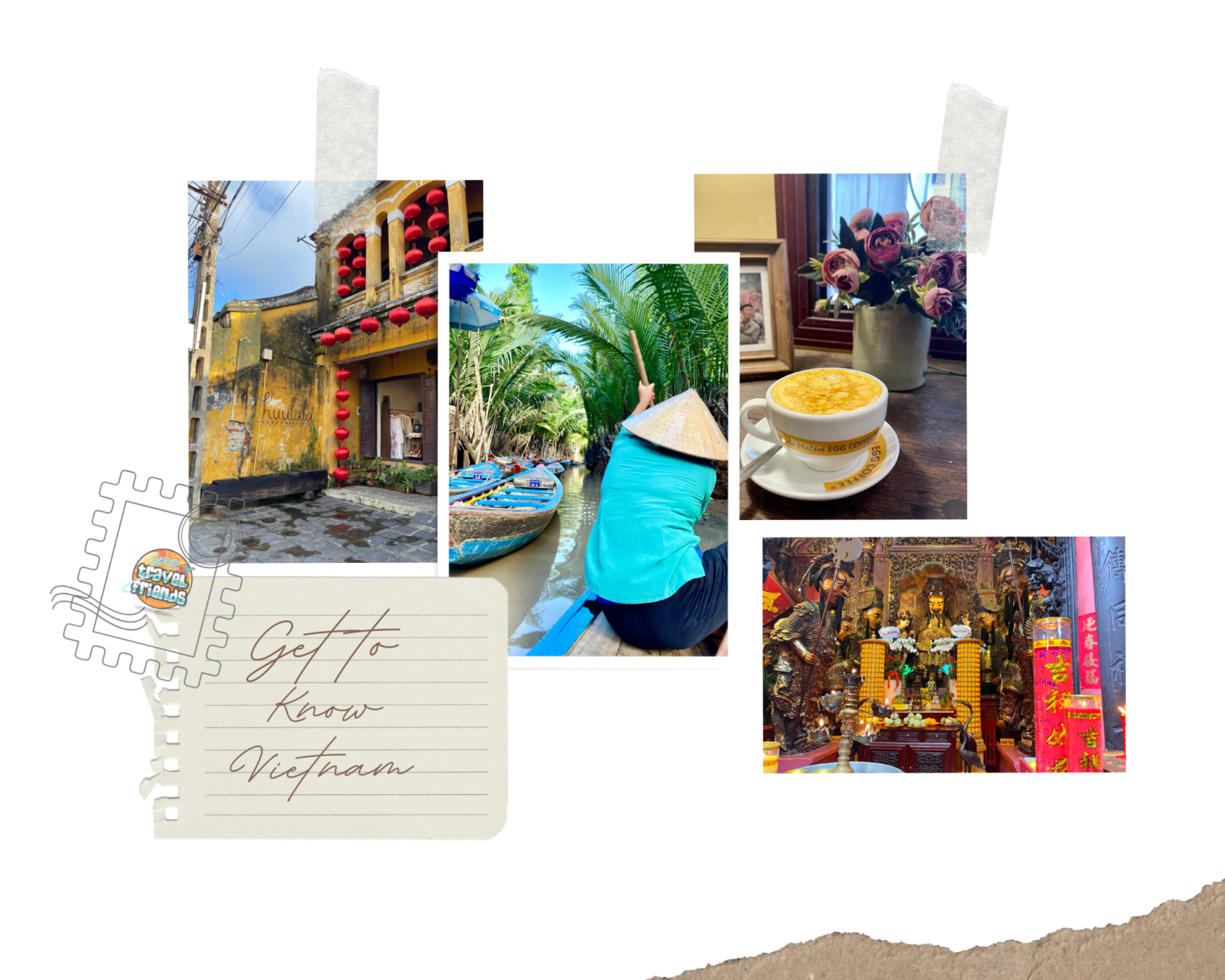
Vietnam travel guide
Vietnam travel guide.
Discover the Land of the Blue Dragon with our ultimate Vietnam travel guide, packed with essential insights for every traveler. Learn when to visit, understand visa requirements, explore travel tips, and uncover the best places in Vietnam—from the vibrant streets of Ho Chi Minh City to the peaceful landscapes of Halong Bay. Full of cultural insights and must-see attractions, this guide has everything you need to plan an unforgettable Vietnam trip.
Vietnam is a Southeast Asian country with a unique blend of landscapes and cultures. Stretching over 1,600 kilometers (994 miles) from north to south, it offers a diverse range of sights. Vietnam shares borders with China, Laos, and Cambodia, and its coast lies along the South China Sea. The country’s geography varies from the towering mountains in the north to the fertile river deltas in the south.
With a history influenced by Chinese, Khmer, and French rule, Vietnam’s culture is rich and complex. After gaining independence in 1945, the country experienced major political changes. Yet, Vietnam has kept its unique traditions. Today, travelers can explore its stunning landscapes, historical sites, and vibrant culture. It’s a top choice for anyone visiting Southeast Asia.
Vietnam is known for its breathtaking natural beauty, rich culture, delicious cuisine, and welcoming people. It’s a land of contrasts where ancient temples and pagodas coexist with modern skyscrapers, and traditional street vendors intermingle with trendy cafes and boutique shops. Here’s a quick list of top destinations to help you explore Vietnam’s diverse wonders:
• Hanoi – Wander through the bustling Old Quarter, taste authentic Vietnamese street food, and take in the history at Ho Chi Minh Mausoleum.
• Ho Chi Minh City (Saigon) – Discover the dynamic energy of Saigon, with visits to Ben Thanh Market, the War Remnants Museum, and the French-colonial architecture of Notre-Dame Cathedral Basilica.
• Da Nang – This coastal city blends modernity with tradition. Check out the iconic Dragon Bridge, explore the Marble Mountains, and unwind at My Khe Beach.
• Hoi An – Known for its well-preserved Ancient Town, this charming city is a UNESCO World Heritage Site, famous for lantern-lit nights and vibrant markets.
• Ha Long Bay – Cruise through emerald waters surrounded by thousands of limestone islands and islets, a UNESCO-listed wonder perfect for relaxation and breathtaking photography.
• Phong Nha-Ke Bang National Park – Explore vast caves and lush jungles in this UNESCO World Heritage Site, including the famous Son Doong Cave, the largest cave in the world.
• Sapa – Nestled in northern Vietnam’s mountains, Sapa is home to terraced rice fields, vibrant ethnic markets, and awe-inspiring trekking opportunities.
• Mekong Delta – Known as the “Rice Bowl of Vietnam,” the delta offers river cruises through floating markets, lush orchards, and peaceful villages.
The ideal time to visit Vietnam depends on the regions and activities you’re interested in, as the climate varies from north to south and across elevations.
Special Considerations
Since August 15, 2023, Vietnam offers e-visas for citizens of all countries. These visas allow a 90-day stay and are valid for single or multiple entries. The cost is $25 for a single-entry visa and $50 for a multiple-entry visa.
📝 You can apply on the official website. (Please be careful of scam websites – this is the only website to apply for your e-visa).
ℹ️ For additional info about visa requirements for Vietnam, click here.
Vietnam’s cuisine is a major attraction, drawing food lovers from around the world. The flavors are a perfect mix of Chinese, French, and Southeast Asian influences. Some must-try dishes include pho, an aromatic noodle soup, and banh mi, a crispy baguette sandwich. Don’t miss trying egg coffee, a unique local specialty served in cozy cafes across cities like Hanoi and Ho Chi Minh City.
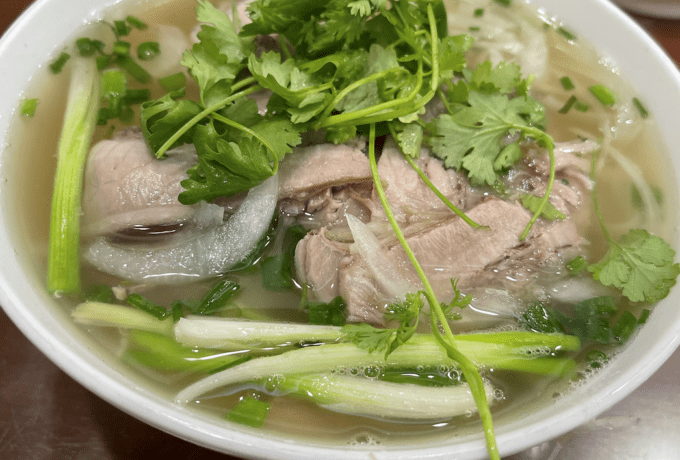
Often considered the unofficial national dish of Vietnam, Pho is a soup consisting of broth, rice noodles, and typically meat, usually beef or chicken.
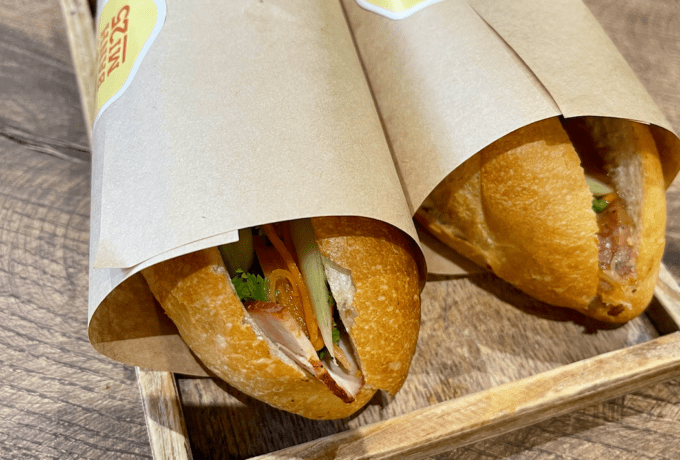
Banh Mi is a sandwich that typically consists of a French baguette, which reflects Vietnam’s colonial history, filled with various ingredients such as savory meats, pâté, etc.
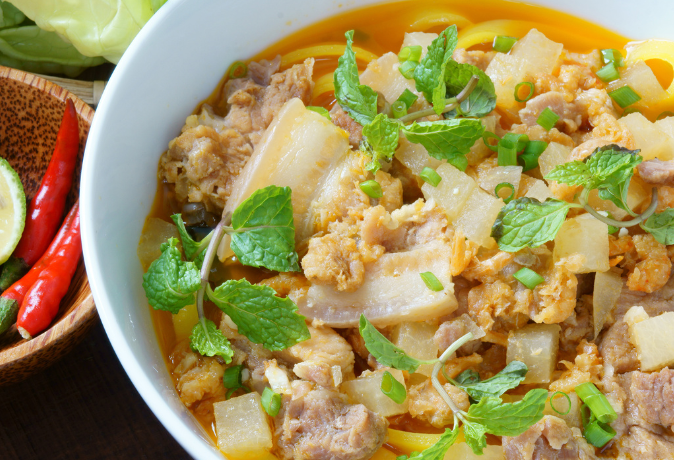
Mi Quang is noodle dish from Quang Nam Province, features yellow turmeric-flavored rice noodles in a rich broth with pork or chicken, and a variety of toppings.
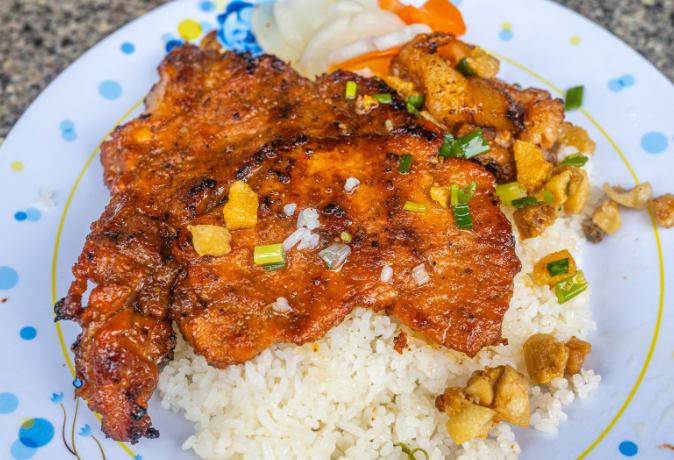
Com Tam is a dish known as broken rice. It is often served with grilled pork, shredded pork skin, a fried egg, and a side of pickled vegetables.
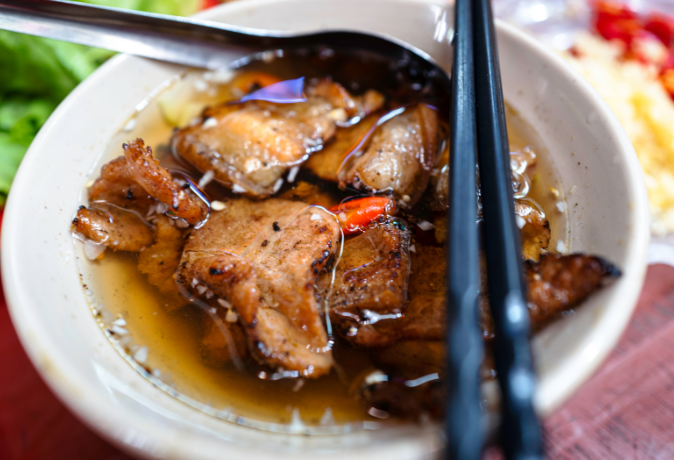
Bun Cha is a features grilled pork patties and pork belly served with vermicelli noodles, fresh herbs, and a savory dipping sauce.
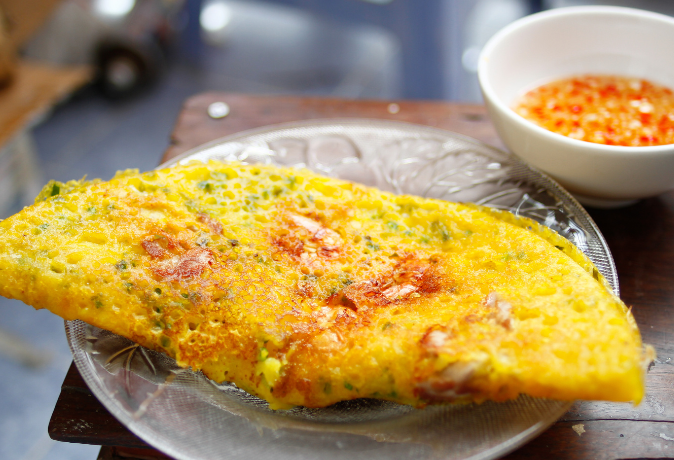
Banh Khoai is a savory pancake made with rice flour, turmeric, and coconut milk, filled with shrimp, pork, and bean sprouts.
These are some of our favorite hotels in Vietnam, which we experienced while traveling throughout the country.
Vietnam stretches 1,650 km (1,025 miles) from the Chinese border in the north to the Mekong Delta in the south, making travel across the country time consuming. With just 10 days to explore (check out our 10-day Vietnam itinerary), we decided to fly between destinations and use Uber to navigate the cities. Here’s an overview of the main transportation options:
Sleeper buses are an affordable way to travel between cities overnight. They have reclining seats that turn into beds, so you can rest during the journey.
Flying is the fastest way to travel long distances in Vietnam. Domestic flights connect major cities and are surprisingly affordable, making them a great option for travelers with tight schedules who want to maximize their time exploring.
Grab is the most popular ride-hailing app in Vietnam. You can use it to book taxis or motorbike rides in big cities like Hanoi and Ho Chi Minh. Grab also offers food delivery and mobile payments.
Remember to check the specific weather conditions during your travel dates and tailor your packing list accordingly.

Pack lightweight and breathable clothing, such as cotton fabrics, suitable for Vietnam's tropical climate. Consider modest attire, especially for visits to temples, and prioritize comfort in the warm weather.

Comfortable shoes for walking, as well as sandals for hot weather.

If you plan to visit coastal areas or to enjoy your hotel swimming pool.

Convenient for day trips and carrying essentials. Opting for an anti theft bag could be a great especially when walking around crowded areas and busy tourist spots.

A lightweight rain jacket or poncho, and and umbrella, especially during the rainy season.

Personal medications, a basic first aid kit, and blister bandages

Sunscreen, a hat, and sunglasses for sun protection. You can also use a UPF 50+ UV umbrella for additional protection.

A power adapter suitable for Vietnamese outlets to charge your electronic devices.

Especially for areas with a higher risk of mosquitoes.

Ensure you have adequate travel insurance coverage.

Passport, visa (if required), and printed copies of important documents.

Show deference to elders and those in positions of authority; use proper titles like "Mr.," "Mrs.," or "Ms." when addressing people.

When visiting religious sites or rural areas, wear modest clothing that covers shoulders and knees to show respect for local customs.

Remove shoes when entering someone's home or certain establishments, and be mindful of keeping feet pointed away from religious altars or offerings.

Greet with a slight bow and a friendly "Xin Chao" (Hello) or "Cam on" (Thank you). A handshake is common in more formal settings.

When presenting a gift, use both hands, and it's customary for the recipient to initially refuse as a sign of politeness before accepting.

Wait for the host to start the meal, and don't begin eating until others do. Use both hands when passing or receiving items and try a little of everything to show appreciation.

Wait for the host to start the meal, and don't begin eating until others do. Use both hands when passing or receiving items and try a little of everything to show appreciation.

Keep public displays of affection to a minimum, as they may be considered inappropriate in certain cultural contexts.

Ask for permission before taking photos of people, especially in rural areas. Be respectful of private spaces and religious practices.

Tipping is not traditionally common, but it's becoming more accepted in tourist areas. Check if a service charge is included in bills.

English may not be widely spoken, especially in rural areas, so learning a few basic Vietnamese phrases can go a long way in fostering positive interactions.

Bargaining is common in markets, but do so with a friendly and respectful attitude. It's part of the culture but be mindful not to push too hard.
Vietnam offers an unforgettable mix of scenic beauty, rich culture, and unique experiences. Use our Vietnam travel guide to plan your trip, explore vibrant cities, sample exquisite food, and gain insight into the country’s rich history.
Spring (February to April) and autumn (August to October) have pleasant temperatures and beautiful scenery.
Some nationalities are exempt from visas, but others require an e-visa, available online.
Be sure to try pho, banh mi, goi cuon, and bun cha, each with its own unique flavors.
Yes, Vietnam is generally safe for solo travelers. Just take common safety precautions, especially in crowded places.
You can get around Vietnam using various options, including renting a motorbike, taking buses or trains, using taxis or ride-hailing apps, biking, walking, and domestic flights for longer distances.
Respect local etiquette, especially in temples. Show politeness to elders and follow dress codes at religious sites.
We hope you will find our Vietnam travel guide useful to plan, explore, and fully immerse yourself in the vibrant culture and landscapes of the country. Safe travels!

